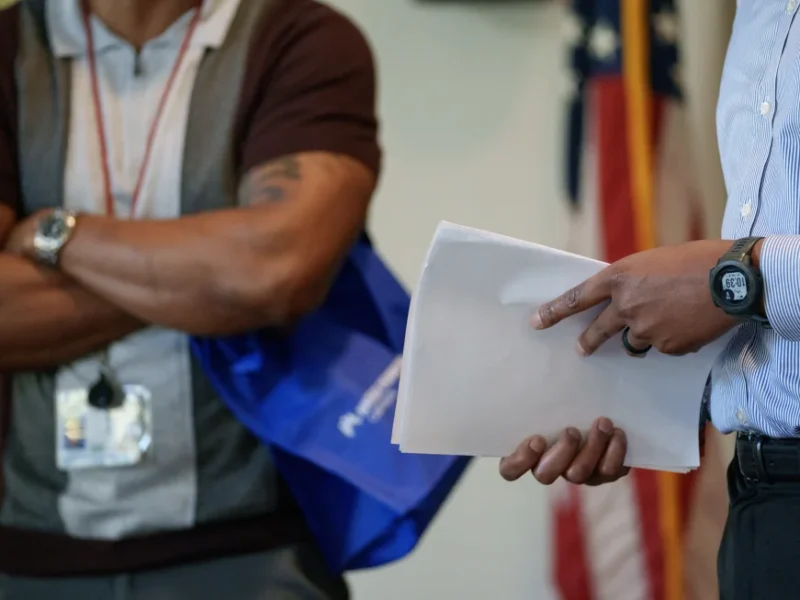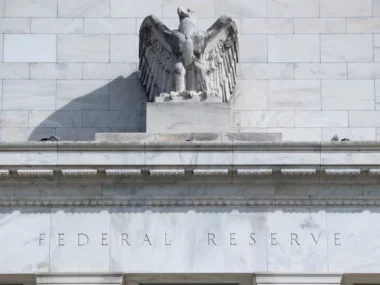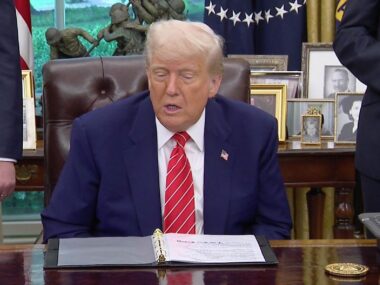Inflation in the US has significantly decreased from its peak nearly two years ago, marking a pivotal point for the Federal Reserve in its ongoing battle against inflation. With a larger pool of workers potentially entering the workforce, there is speculation that inflation could be further slowed down.
This scenario could also increase the likelihood of achieving a “soft landing,” a rare outcome where inflation is controlled without triggering a recession.
San Francisco Fed President Mary Daly recently emphasized the role of supply in the inflation narrative, particularly the positive developments in labor and productivity. Last year, America’s job market showed resilience, with robust hiring by employers, low unemployment rates, and more individuals returning to work.
Following a decline at the onset of the Covid-19 pandemic due to factors like early retirements and concerns about contracting the virus, labor force participation began to rebound and saw significant growth last year.
Sarah House, a senior economist at Wells Fargo, highlighted the substantial increase in labor supply in 2021 and 2022, which helped alleviate pressure on wages and labor costs while enabling employers to hire more workers and boost consumer spending.
However, the question remains: to what extent can improved labor supply further mitigate inflation? Economists suggest there is still room for enhancement, although it’s uncertain if these gains will be adequate to push inflation towards the Federal Reserve’s 2% target.
Michael Gapen, chief US economist at Bank of America, anticipates the labor force dynamics to persist through 2024, albeit at a slower pace compared to previous years, contributing to a lower inflationary environment.
While some workers took time to rejoin the labor force, strong demand throughout 2023 fueled by increased consumer spending and immigration played significant roles in supporting employment levels. Despite these positive trends, labor force participation remains below pre-pandemic levels.
Sarah House noted that improvements in labor supply might only marginally impact inflation this year, with the Fed’s focus shifting towards managing demand through interest rate adjustments to further contain inflationary pressures.
Leading soccer clubs are employing an AI-driven application to identify prospective talents for their teams.
A tech company based in London aims to revolutionize talent identification and scouting in soccer through a mobile app, according to a report by my colleague Jack Bantock.
The aiScout app, which is free to download and accessible worldwide, enables aspiring soccer players to participate in virtual trials for professional clubs by submitting self-recorded videos showcasing their skills in a series of drills. The app offers 75 exercises designed to assess various abilities, accompanied by instructional videos demonstrating how to perform them.
Using artificial intelligence (AI) technology, the app automatically evaluates performances, generating data that can be accessed by clubs. This allows scouts to review scores and identify promising talent, refining their search using filters such as age, gender, and position on the field.
Currently, the app has partnered with two English Premier League (EPL) clubs, Chelsea and Burnley. Clubs have the flexibility to customize their in-app trials to suit their specific requirements and establish benchmarks by having their academy players complete the same drills.
Richard Felton-Thomas, the chief operating officer of ai.io, the company behind the app, emphasized the efficiency of the platform in optimizing scouts’ time. By providing data upfront, scouts can prioritize attending matches where potential talents surpass the club’s standards, enhancing the effectiveness of their scouting efforts.
Up Next
Here’s a summary of the upcoming events for the week:
Monday: Philadelphia Fed President Patrick Harker delivers a speech.
Tuesday: Earnings reports from Target, Ross, and Nordstrom. S&P Global and the Institute for Supply Management release business surveys for February, focusing on the US services sector. The US Commerce Department publishes January data on new orders for manufactured goods. Fed Vice Chair for Supervision Michael Barr gives a speech.
Wednesday: Earnings reports from JD.com, Campbell Soup, Abercrombie & Fitch, Foot Locker, and Victoria’s Secret. Fed Chair Jerome Powell testifies before the US House Financial Services Committee. The Bank of Canada announces its latest interest rate decision. The US Labor Department releases January figures on job openings, quits, hires, and layoffs. San Francisco Fed President Mary Daly delivers a speech. China’s customs agency releases trade data for the first two months of the year.
Thursday: Earnings reports from Broadcom, Costco, Kroger, Burlington, DocuSign, Gap, American Eagle Outfitters, and Potbelly. Fed Chair Jerome Powell testifies before the US Senate Committee on Banking, Housing, and Urban Affairs. The European Central Bank announces its latest interest rate decision. The US Labor Department reports the number of new applications for jobless benefits in the week ended March 2. The US Commerce Department releases January data on trade flows. Cleveland Fed President Loretta Mester delivers a speech.
Friday: The US Labor Department releases February data on the state of the US labor market, including monthly job growth, wage gains, and the unemployment rate. China’s National Bureau of Statistics releases February inflation data.











